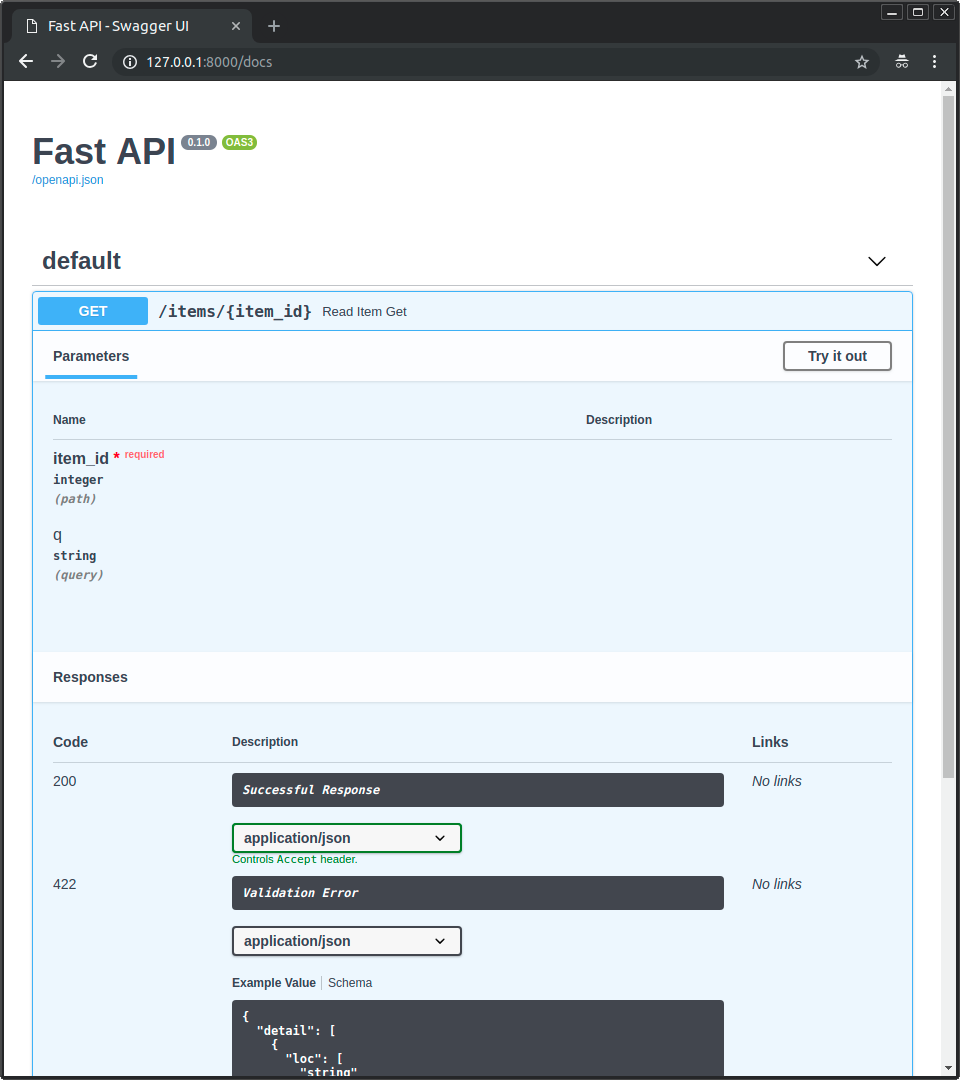- Sort Score
- Result 10 results
- Languages All
Results 1 - 10 of 58 for simple (0.16 sec)
-
docs/em/docs/tutorial/security/simple-oauth2.md
Nils Lindemann <******@****.***> 1713469999 +0200
Plain Text - Registered: Sun May 05 07:19:11 GMT 2024 - Last Modified: Thu Apr 18 19:53:19 GMT 2024 - 8.9K bytes - Viewed (0) -
docs/zh/docs/tutorial/security/simple-oauth2.md
Nils Lindemann <******@****.***> 1713469999 +0200
Plain Text - Registered: Sun May 05 07:19:11 GMT 2024 - Last Modified: Thu Apr 18 19:53:19 GMT 2024 - 8.8K bytes - Viewed (0) -
docs/fr/docs/deployment/docker.md
* (Optionnellement) comprendre ce que vous, en tant que développeur, devez savoir sur HTTPS. * Configurer un cluster en mode Docker Swarm avec HTTPS automatique, même sur un simple serveur à 5 dollars US/mois. En environ **20 min**. * Générer et déployer une application **FastAPI** complète, en utilisant votre cluster Docker Swarm, avec HTTPS, etc. En environ **10 min**.
Plain Text - Registered: Sun May 05 07:19:11 GMT 2024 - Last Modified: Thu May 12 00:06:16 GMT 2022 - 7.5K bytes - Viewed (0) -
docs/fr/docs/deployment/index.md
# Déploiement Le déploiement d'une application **FastAPI** est relativement simple. ## Que signifie le déploiement **Déployer** une application signifie effectuer les étapes nécessaires pour la rendre **disponible pour les utilisateurs**. Pour une **API Web**, cela implique normalement de la placer sur une **machine distante**, avec un **programme serveur**
Plain Text - Registered: Sun May 05 07:19:11 GMT 2024 - Last Modified: Sat Jun 24 14:47:15 GMT 2023 - 1.5K bytes - Viewed (0) -
tests/test_security_http_basic_realm_description.py
assert response.headers["WWW-Authenticate"] == 'Basic realm="simple"' def test_security_http_basic_invalid_credentials(): response = client.get( "/users/me", headers={"Authorization": "Basic notabase64token"} ) assert response.status_code == 401, response.text assert response.headers["WWW-Authenticate"] == 'Basic realm="simple"' assert response.json() == {"detail": "Invalid authentication credentials"}
Python - Registered: Sun Apr 28 07:19:10 GMT 2024 - Last Modified: Fri Jun 30 18:25:16 GMT 2023 - 2.8K bytes - Viewed (0) -
docs/en/docs/benchmarks.md
* Will have the next best performance, after Uvicorn. In fact, Starlette uses Uvicorn to run. So, it probably can only get "slower" than Uvicorn by having to execute more code. * But it provides you the tools to build simple web applications, with routing based on paths, etc. * If you are comparing Starlette, compare it against Sanic, Flask, Django, etc. Web frameworks (or microframeworks). * **FastAPI**:
Plain Text - Registered: Sun May 05 07:19:11 GMT 2024 - Last Modified: Thu Apr 18 19:53:19 GMT 2024 - 3.4K bytes - Viewed (0) -
docs/fr/docs/benchmarks.md
En particulier, on voit Uvicorn, Starlette et FastAPI comparés (parmi de nombreux autres outils). Plus le problème résolu par un outil est simple, mieux seront les performances obtenues. Et la plupart des tests de performance ne prennent pas en compte les fonctionnalités additionnelles fournies par les outils. La hiérarchie est la suivante :
Plain Text - Registered: Sun May 05 07:19:11 GMT 2024 - Last Modified: Thu Jul 27 18:49:56 GMT 2023 - 3.9K bytes - Viewed (0) -
docs/em/docs/tutorial/first-steps.md
 ### 🎛 🛠️ 🩺 & 🔜, 🚶 <a href="http://127.0.0.1:8000/redoc" class="external-link" target="_blank">http://127.0.0.1:8000/redoc</a>. 👆 🔜 👀 🎛 🏧 🧾 (🚚 <a href="https://github.com/Rebilly/ReDoc" class="external-link" target="_blank">📄</a>):  ### 🗄
Plain Text - Registered: Sun May 05 07:19:11 GMT 2024 - Last Modified: Thu Apr 18 19:53:19 GMT 2024 - 8.1K bytes - Viewed (0) -
tests/test_response_model_include_exclude.py
Python - Registered: Sun May 05 07:19:11 GMT 2024 - Last Modified: Mon Jul 19 19:14:58 GMT 2021 - 4K bytes - Viewed (0) -
docs/en/docs/tutorial/testing.md
Create functions with a name that starts with `test_` (this is standard `pytest` conventions). Use the `TestClient` object the same way as you do with `httpx`. Write simple `assert` statements with the standard Python expressions that you need to check (again, standard `pytest`). ```Python hl_lines="2 12 15-18" {!../../../docs_src/app_testing/tutorial001.py!} ``` !!! tip
Plain Text - Registered: Sun May 05 07:19:11 GMT 2024 - Last Modified: Thu Apr 18 19:53:19 GMT 2024 - 6.2K bytes - Viewed (0)